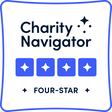From Silos to Synergy: How the Funding Landscape is Shifting for Maternal and Newborn Health, Justice, and Equity (2021)
|
This report, developed by Global Health Visions in partnership with the Global Force for Healing and the National Birth Equity Collaborative, aims to reflect the current funding landscape for maternal and newborn health, rights, and birth equity programs, in the U.S. and around the world. Through an in-depth analysis of U.S.-based donors, the report highlights current trends, gaps, and key recommendations for shaping the future of maternal and newborn health, justice, and equity through the funding landscape, including how donors can be more responsive to community needs and increase impact for all stakeholders.
|
Funding Equity: Birth Justice and Human Rights in Maternal and Infant Health (2019)
|
Funding Equity: Birth Justice and Human Rights in Maternal and Infant Health is a collection of position papers on the critical role of funders in promoting birth justice and human rights in the U.S. and worldwide. Funding Equity is more than a report. It powerfully addresses underlying causes of disparities in worldwide access to quality care during the childbearing years for marginalized communities, and offers effective solutions from organizations on the ground.
|
Healthy Birthing Teaching Guide for Expectant Fathers (2019)
|
This document is produced as part of the “Paternity Project” implemented by Cameroon Agenda for Sustainable Development (CASD) in Cameroon with the generous support of Global Force for Healing (GFH) and the Ministry of Public Health Cameroon. The objective is to increase knowledge resources on ANC and Postnatal care targeting expectant fathers in limited resource settings.
Organizations, families and individuals can use this document to enhance the skills of expectant fathers on their role in achieving a healthy childbirth. The manual takes the man from identifying a pregnant woman, supporting the pregnancy, assisting in the delivery, providing care to the newborn, and planning for the next child (if needed). |
Global Birth Models (2014)
|
This report highlights effective organizational models for healthy childbirth in particular cultural settings, in order to provide guidance, inspiration, and ideas that may be applicable to other cultural environments. We also highlight why particular strategies and each model as a whole leads to successful birth outcomes and reduction of maternal and infant deaths.
|










